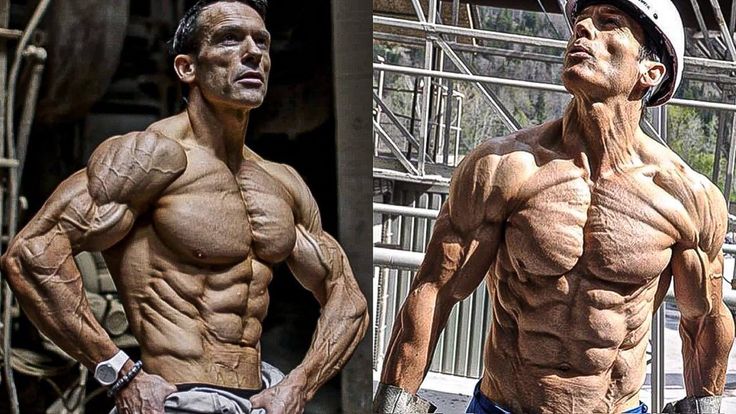Get Ripped


The Key to Getting Ripped
Achieving a ripped physique is a complex endeavor that extends beyond the simple act of losing weight. At the core of this journey lies the concept of body composition, which refers to the relative amounts of fat and lean mass in the body. Understanding body composition is crucial as it provides valuable insights into one’s fitness status and overall health. The two primary components of body composition that are essential to focus on are body fat percentage and lean muscle mass.
Body fat percentage is a critical metric that indicates how much of your total body weight comes from fat. Lowering this percentage is key to revealing well-defined muscles beneath the fat layer. Conversely, lean muscle mass encompasses everything in the body that is not fat, including bones, water, and vital organs, as well as muscles. Retaining lean muscle while losing body fat is paramount for a ripped appearance; hence, a balanced approach to nutrition and exercise is needed to achieve this goal.
Accurate measurement of body composition can be accomplished through various methods, including skinfold calipers, bioelectrical impedance analysis, and dual-energy X-ray absorptiometry (DEXA). These tools help individuals understand their current status and set realistic goals aligned with their specific body composition objectives. It is often a misconception that weight loss alone translates to fat loss. In fact, it is possible to lose weight while simultaneously losing muscle mass, leading to an undesired physique. Therefore, focusing on fat loss rather than weight loss will ensure that you preserve lean muscle and enhance your overall appearance and performance.
Incorporating strategies that prioritize fat loss while retaining muscle mass is essential for those aspiring to achieve a ripped body. This balanced approach facilitates sustainable progress and ensures that the pathway to a well-defined physique remains focused and effective.
The Role of Nutrition: Fueling Your Ripped Physique
Achieving a ripped physique requires a well-structured approach to nutrition, focusing on strategies that support fat loss while preserving muscle mass. The distribution of macronutrients—proteins, carbohydrates, and fats—plays a crucial role in this endeavor. Protein intake is particularly important, as it helps maintain muscle integrity during a caloric deficit. Research indicates that a daily intake of approximately 1.6 to 2.2 grams of protein per kilogram of body weight can promote muscle preservation and repair, counteracting the potential loss during weight reduction.
Carbohydrate timing is another essential aspect of nutrition for those aiming to get ripped. Consuming carbohydrates around workout times can improve performance and recovery. A strategy that includes higher carbohydrates pre- and post-workout can provide energy and promote muscle glycogen replenishment, enhancing training outcomes and supporting overall muscle retention. It is advisable to select complex carbohydrates such as whole grains, vegetables, and fruits instead of simple sugars, which can lead to quick energy spikes followed by crashes.
Healthy fats also contribute to a balanced diet, with sources such as avocados, nuts, seeds, and olive oil providing essential fatty acids important for hormone regulation and overall health. Fats should be consumed in moderation, making up about 20-35% of total caloric intake, which helps maintain satiety and supports metabolic functions.
Caloric deficits are necessary for fat loss. To determine the required caloric intake, individuals must first calculate their Total Daily Energy Expenditure (TDEE), which factors in basal metabolic rate (BMR) and daily activity levels. To effectively facilitate fat loss, a moderate deficit of 500 calories per day is often recommended, allowing for sustainable weight loss while minimizing muscle loss. Hydration is equally vital; adequate water intake supports metabolism and aids in muscle function, making it imperative for anyone striving for a ripped physique to maintain optimal hydration levels.
Effective Workouts: Building Muscle and Burning Fat
To achieve a ripped physique, it is vital to implement effective workouts that facilitate both muscle building and fat loss. The cornerstone of any successful fitness regimen lies in a combination of resistance training, high-intensity interval training (HIIT), and cardiovascular exercise. Each of these workout types has unique benefits that collectively enhance body composition.
Resistance training plays a critical role in muscle development. Incorporating compound movements, such as squats, deadlifts, and bench presses, is essential. These exercises engage multiple muscle groups simultaneously, promoting greater hormonal response and overall muscle growth. Additionally, the principle of progressive overload should be applied, meaning you will gradually increase the weight or resistance as your strength improves. This principle not only aids in muscle retention but also encourages continuous adaptation, which is key for fat burning.
High-intensity interval training (HIIT) is another crucial component. HIIT involves short bursts of intense exercise followed by recovery periods. This format elevates heart rate and metabolic rate, contributing to significant fat loss in relatively short workout sessions. Sessions of 20-30 minutes, performed 2-3 times per week, can be extremely effective for enhancing cardiovascular fitness and burning fat while preserving lean muscle.
Cardiovascular exercise remains important as well; however, it should complement rather than dominate your overall workout strategy. Engaging in steady-state cardio, such as running or swimming, on non-resistance training days can aid in fat loss while promoting recovery. For optimal results, aim for 150-300 minutes of moderate aerobic activity weekly.
Sample workout routines combining these elements can easily be tailored for various fitness levels. A beginner might start with bodyweight exercises on resistance days and low-intensity steady-state cardio, while more advanced individuals may incorporate heavier weights and complex HIIT sessions. Finding the right balance of these workouts will lead to effective fat loss and muscle retention, advancing you toward your goal of getting ripped.
Mindset and Lifestyle Changes: The Mental Game of Getting Ripped
Achieving a state of being "ripped" extends well beyond physical training and dietary modifications; it fundamentally relies on a robust mental framework. Cultivating a positive mindset and discipline is essential in the pursuit of fat loss and muscle retention. Setting realistic and achievable fitness goals empowers individuals to remain focused and motivated. These objectives should be specific, measurable, attainable, relevant, and time-bound (SMART) to facilitate progress tracking and bolster confidence.
Overcoming mental barriers is crucial in this journey. It is not uncommon for individuals to face doubts about their abilities, leading to procrastination or inconsistency. Self-awareness plays a significant role in identifying such obstacles. Developing strategies to confront negative thoughts—such as positive affirmations or visualization techniques—can promote a more resilient mindset. Surrounding oneself with supportive peers and family can further enhance motivation and accountability in this process.
Moreover, stress management significantly impacts one’s physical transformation. Elevated stress levels can impede fat loss by triggering hormonal imbalances and encouraging unhealthy eating habits. Prioritizing relaxation techniques such as meditation, yoga, or simple breathing exercises can contribute to improved mental clarity and emotional stability, which are vital for maintaining the discipline necessary for a successful transformation.
Sleep quality is another crucial aspect that is often overlooked. Insufficient rest can hinder recovery and impact performance in training sessions, undermining efforts to get ripped. Establishing a consistent sleep schedule and creating a conducive sleep environment can improve both mental and physical recovery, thereby supporting fat loss and muscle retention. By harmonizing these psychological elements with dedicated effort, individuals can forge a sustainable lifestyle that fosters their goal of getting ripped.
